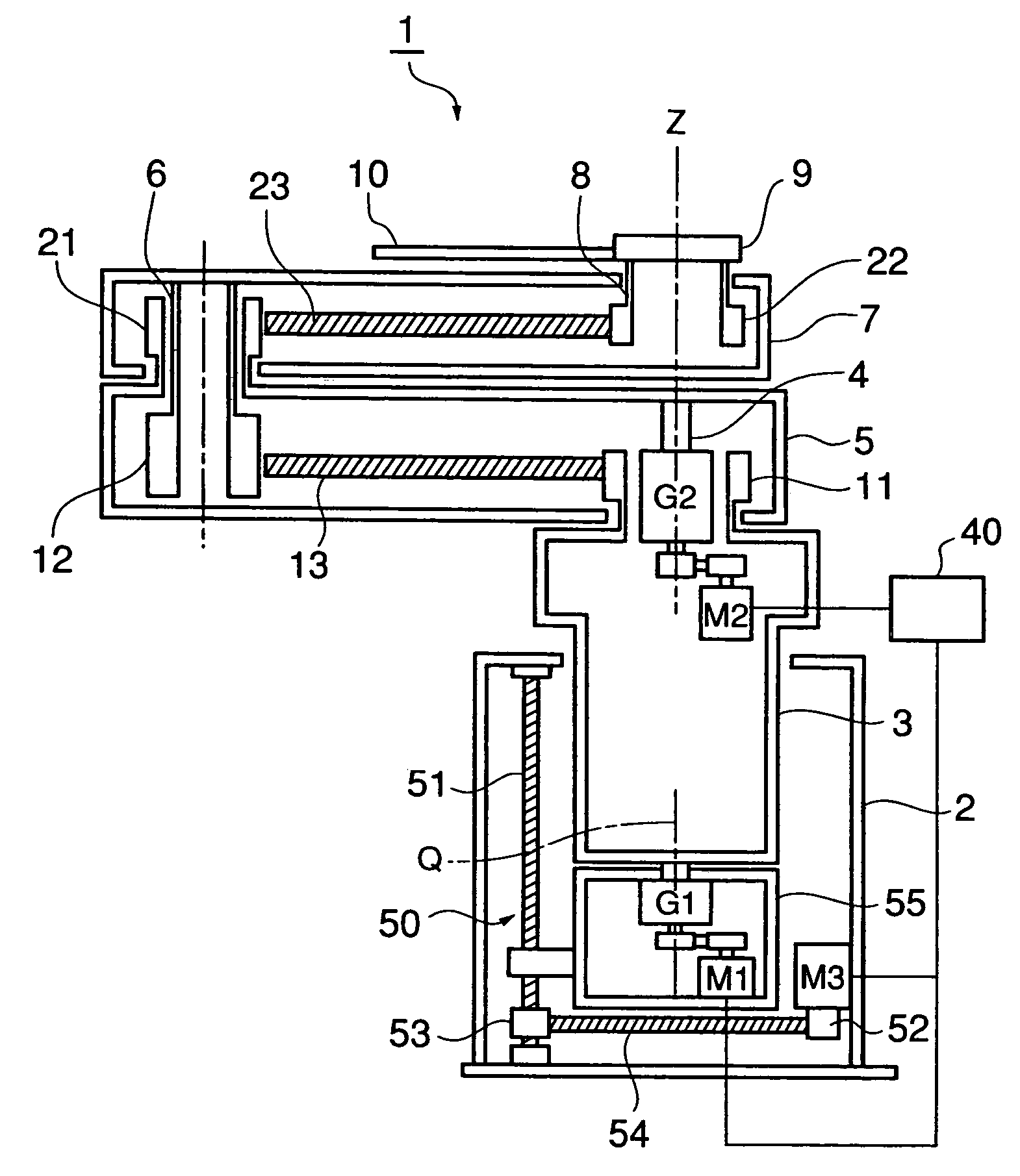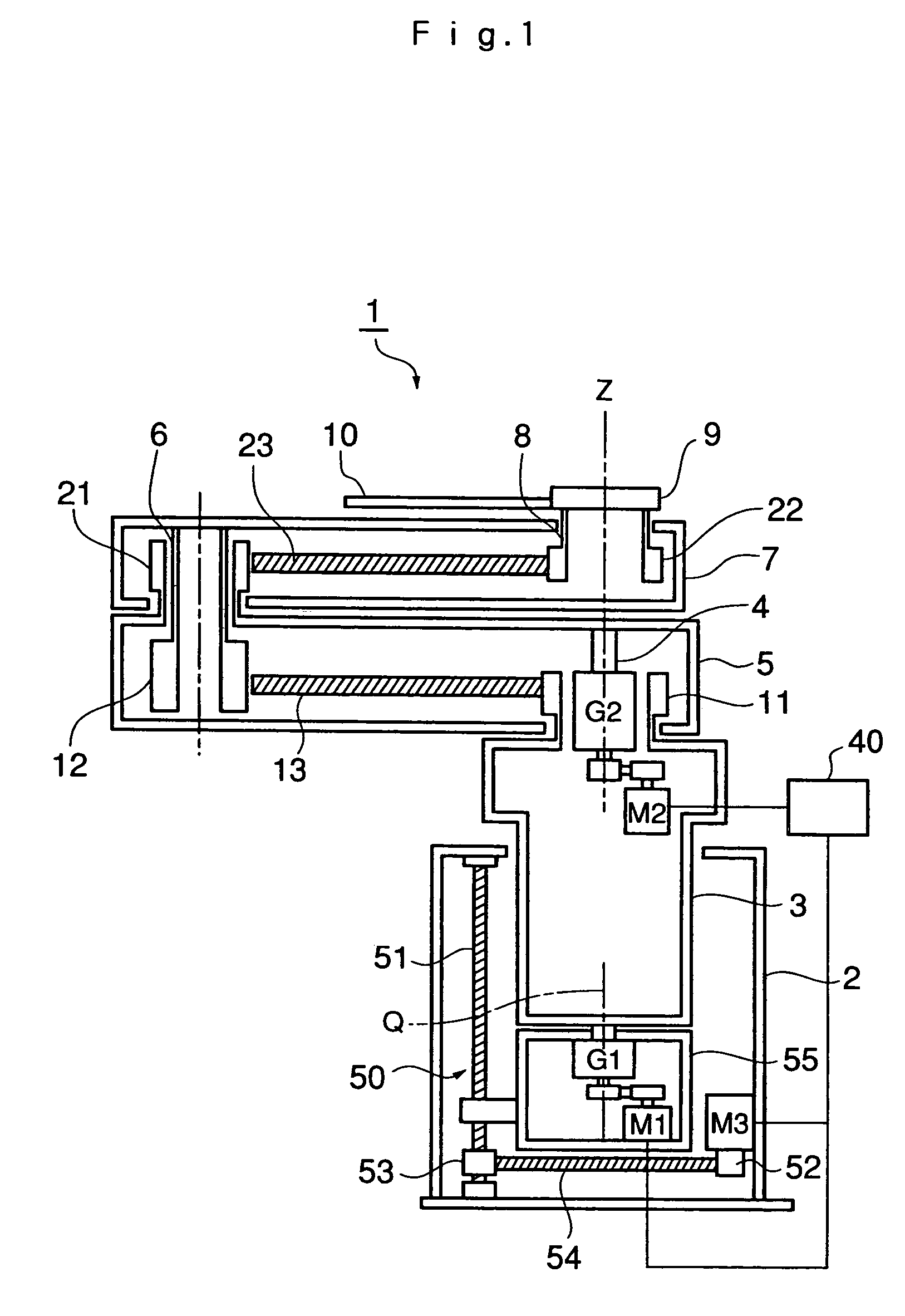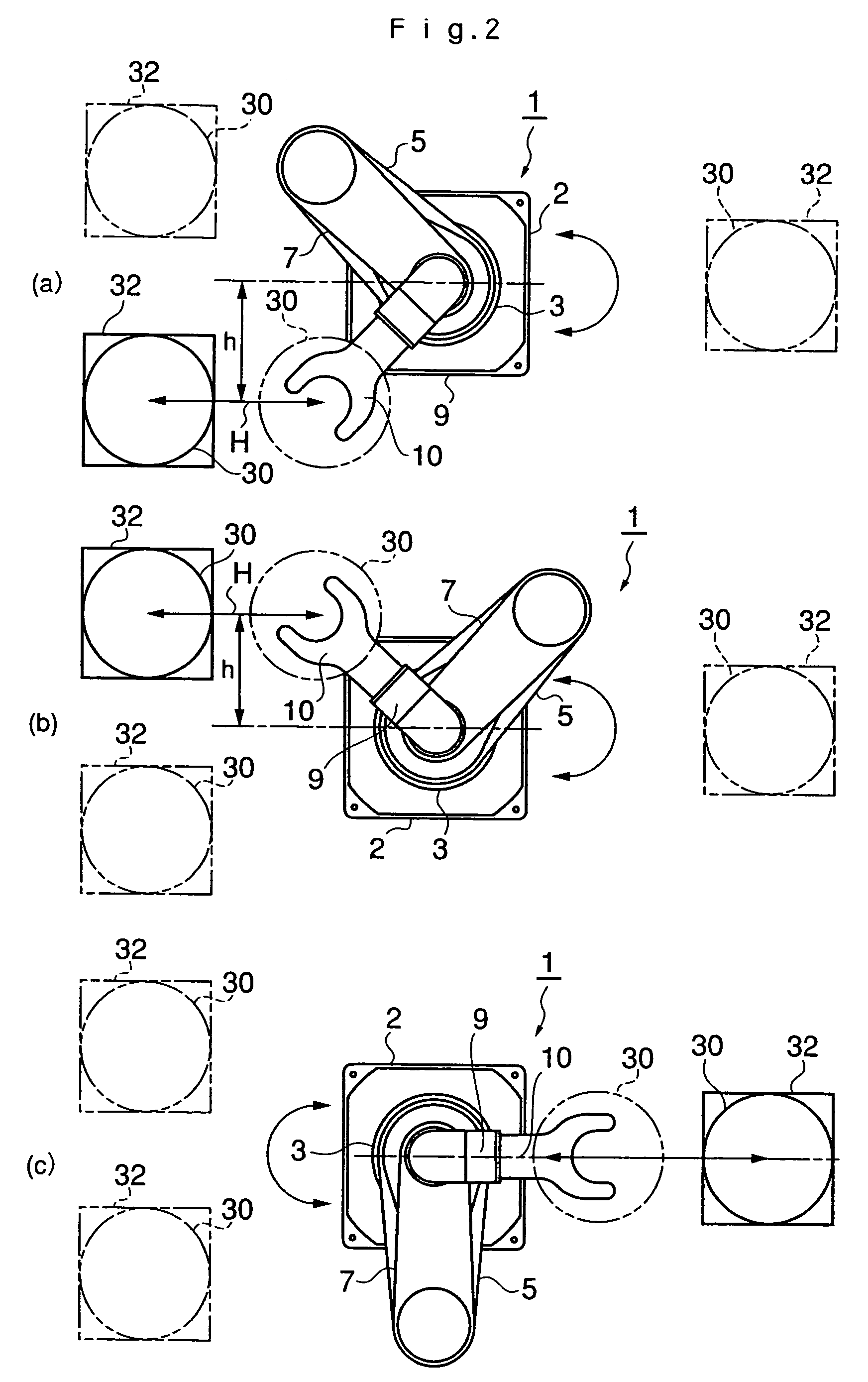Substrate conveyer robot
- Summary
- Abstract
- Description
- Claims
- Application Information
AI Technical Summary
Benefits of technology
Problems solved by technology
Method used
Image
Examples
first embodiment
[0031]the invention will now be described with reference to FIG. 1 through FIG. 5, and FIG. 9.
[0032]The substrate conveyer robot of the first embodiment is a so-called single arm sequence type substrate conveyer robot that possesses a single sequence arm expansion / contraction mechanism, having three arms, which is used, for example, for conveying a semiconductor wafer substrate. Generally, such a substrate is a disk and has an orientation flat (a part cut off along a straight line on the edge of the disk) that is used for positioning, etc., formed on one part of the circumference.
[0033]As illustrated in FIG. 1, the substrate conveyer robot 1 of the first embodiment includes a robot body 2 with a rotatable base 3 having a pivotal center Q, which base 3 is rotatably driven by the first motor M1 via a reduction gear G1 around the pivotal center Q. The first motor M1 is housed and fixed inside an elevation base 55 installed beneath the rotation base 3.
[0034]Inside the body of the rotata...
second embodiment
[0053]Next, the invention will be explained with reference to FIG. 6 through FIG. 8, and FIG. 10.
[0054]The substrate conveyer robot according to the second embodiment, as illustrated in FIG. 6 and FIG. 10, is configured as a so-called double arm sequence type substrate conveyer robot 1, that includes one pair (two sequences) of arm expansion / contraction mechanisms in a bilateral symmetry, each composed of three arms (first through third arms).
[0055]In the arm expansion / contraction mechanisms of the arm sequences A and B providing the double arm sequence, as illustrated in FIG. 6 and FIG. 7, the pivots P1 and P1′ of the first spindles 4 and 4′ are placed at symmetrical positions relative to the pivotal center Q of the rotatable base 3 to be offset therefrom by an equal distance x, and the second motors M2 and M2′ are provided as the driving sources for the first spindles 4 and 4′, respectively. Also, the center points P4 and P4′ of the substrates 30 and 30′, respectively held by the ...
PUM
 Login to View More
Login to View More Abstract
Description
Claims
Application Information
 Login to View More
Login to View More - Generate Ideas
- Intellectual Property
- Life Sciences
- Materials
- Tech Scout
- Unparalleled Data Quality
- Higher Quality Content
- 60% Fewer Hallucinations
Browse by: Latest US Patents, China's latest patents, Technical Efficacy Thesaurus, Application Domain, Technology Topic, Popular Technical Reports.
© 2025 PatSnap. All rights reserved.Legal|Privacy policy|Modern Slavery Act Transparency Statement|Sitemap|About US| Contact US: help@patsnap.com



